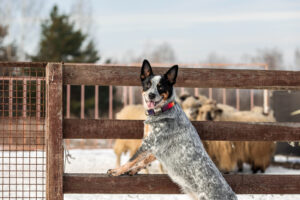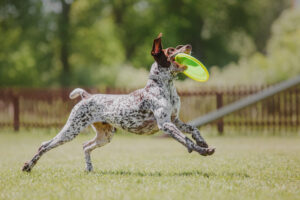Do you know someone who has a nut allergy? What if we told you that food allergies could also affect dogs? Like humans occasionally experience an immunological response to specific foods or dietary categories, many canines also experience food allergies.
If your dog consistently reacts negatively to food, or if you introduce a new brand of treats and your dog displays alarming signs, it may have a food allergy.
Certain dog diets sold in grocery shops may claim not to include a component your dog is allergic to. Yet it’s crucial to remember that, in contrast to high-performance and customizable dog food, pet foods sold in stores are not produced using the health and safety standards that prevent cross-contamination.
This blog covers all the information you require concerning dog food allergies.
What is a Dog Food Allergy
When an animal’s immune system mistakes a food protein for an invader rather than a food component, it produces an immunological reaction that results in a food allergy.
The final effect of this reaction may lead to skin or digestive system issues or, for some unfortunate pets, both.
Rarely, a severe reaction resulting in anaphylaxis might happen, comparable to severe peanut allergies in people.
Signs and Symptoms
There are numerous warning signs and symptoms for dog food allergies, much like human allergies. Dogs who have food allergies may exhibit the following symptoms:
-
Itchy Skin
An underlying food allergy frequently manifests as itching. When a pet has food allergies, they often scratch their ears, lick their paws, itch their sides and armpits, and scoot behind on the ground.
While anal sac issues are frequently linked to food allergies, if your dog is frequently scooting their rear end, you may need to have your vet check them.
-
Skin Infections
Itching often causes skin lesions, which are typical symptoms. Skin infections can result from the persistent inflammation brought on by the food allergy and the harm to their skin from scratching.
Frequent paw-licking can also cause secondary skin infections and yeast infection overgrowth. Sometimes, ear infections can occasionally be the only symptom of an underlying food allergy.
-
Hives
Hives might appear as elevated, red spots that itch and irritate. These could be noticeable on the tummy of your dog. You can either feel through the fur for them or use a comb to split the fur and see them. Your dog will probably bite and scratch at their hives, which can hurt them further.
-
Gastrointestinal Issues
Food allergies can occasionally bring on gastrointestinal problems in dogs. The most typical symptoms are nausea, vomiting, diarrhea, or excessive gas.
It’s crucial to work with your veterinarian to identify the underlying cause, determine whether it’s connected to a food allergy, and obtain a long-term cure because numerous factors can result in digestive discomfort in dogs.
-
Tiredness
One of the most typical symptoms of a stomach-related food allergy is lethargy. A food allergy may be the problem if you notice your dog is less energetic than usual or has suddenly lost interest in their typical hobbies.
How to Treat Allergy with High-Performance Dog Food
For dogs with food allergies, there is no treatment. Avoidance is the only available remedy. Some dogs will need medication when symptoms are severe, but a hypoallergenic and high-performance diet of customized dog food can stabilize your pet.
Determining which foods your dog is allergic to can be challenging, especially given that most dog foods blend numerous different proteins. You can only “test” by doing an elimination diet.
Gourmet Pet Chef creates high-performance dog foods that are fresh, easy to digest, and adapted to your dog’s needs. We’ll provide meals that are carefully curated with single protein sources using the principles of a unique protein and carbohydrate diet to help you identify the cause of their discomfort.
Related posts:
- Trimming Down for a Healthier Hound: How the Right Kibble Can Help Your Dog Lose Weight Safely and Effectively
- Healthy Eating for Urinary Health: The Benefits of Gourmet Pet Chef’s Prepared Chicken and Rice for Dogs with Bladder Stones
- Why Gourmet Pet Chef’s Prepared Chicken and Rice is the Best Food for Dogs with Arthritis
- Kelp and Fish Oil: The Key Ingredients in Gourmet Pet Chef’s Nutritious Dog Food








